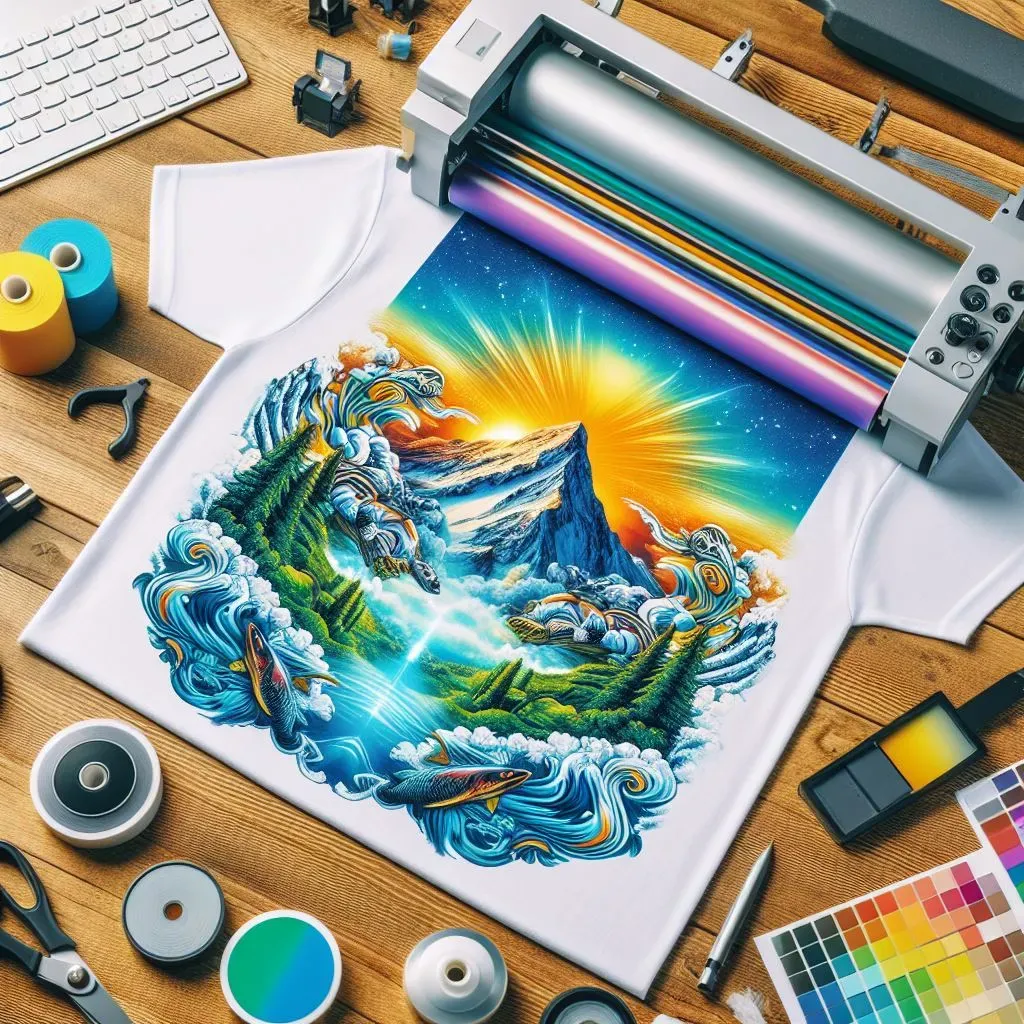Common mistakes in DTF transfers can significantly impact the quality and durability of your printed designs. As Direct-to-Film (DTF) technology continues to evolve, understanding these common pitfalls is essential for both beginners and seasoned print professionals. From improper printer settings to neglecting pre-treatment processes, each mistake can lead to frustrating outcomes, affecting your customer satisfaction and production efficiency. To truly harness the potential of DTF printing, it’s crucial to learn how to enhance your techniques and avoid common DTF printing mistakes. This introduction will guide you through important DTF transfer tips and best practices to ensure your designs have the vibrant appearance and lasting quality they deserve.
When exploring the world of Direct-to-Film applications, recognizing typical errors can help optimize your workflow and improve print results. This guide delves into frequent issues encountered during DTF transfer processes, offering insights into how to refine your technique and enhance the overall print quality. From ensuring proper pre-treatment to understanding the significance of using high-quality materials, every aspect of DTF printing matters. By familiarizing yourself with these best practices, you can mitigate risks associated with DTF printing mistakes, paving the way for stunning creations. Whether you are looking to produce custom apparel or just want to elevate your DTF transfer projects, understanding these aspects can greatly improve your outcomes.
1. Key Printer Settings for Optimal DTF Transfers
Getting the printer settings right is crucial for successful DTF transfer applications. The resolution must be adjusted correctly, ideally set at a high dpi (dots per inch), to ensure that the details in your design are crisp and vibrant. When the settings are tuned poorly, colors may appear washed out, and images may look pixelated. Always consult your printer’s manual for recommended settings tailored specifically for DTF transfers and adjust accordingly.
Another common mistake is neglecting the ink flow settings. If the ink flow is too high or too low, it can lead to undesired effects such as bleeding or uneven coloring. Regular maintenance checks on your printer can prevent these issues and enhance the quality of your DTF prints.
2. The Importance of Pre-Treatment in DTF Transfers
Pre-treatment for DTF transfers plays a vital role in ensuring that the transfer adheres properly to the fabric. Skipping this step can result in poorly adhered designs that may peel off or fade over time. Proper pre-treatment solutions should be compatible with both the transfer film and the substrate, ensuring that the prints bond effectively and remain durable after multiple washes.
Additionally, using the incorrect type of pre-treatment can also hinder the bonding process. Each fabric type may require a specific pre-treatment method, making it essential to conduct thorough research. By meticulously following pre-treatment best practices, you can significantly enhance the overall longevity and quality of your DTF prints.
3. Curing Techniques for DTF Transfers
Curing DTF transfers correctly is as important as printing and applying. This step involves applying heat to the transfer after printing, which activates the adhesive powder and promotes a durable bond to the fabric. Insufficient curing time can leave the transfer weak, increasing the likelihood of fading or peeling over time. Always adhere to the manufacturer’s recommended curing times and temperatures for optimal results.
It’s also crucial to ensure that your heat press is functioning correctly and evenly distributes heat. Any cold spots in your press could lead to inconsistencies in adhesion. Maintaining ideal conditions during the curing process will ultimately lead to high-quality results that stand the test of time.
4. Product Quality: Choosing the Right Inks and Films
The selection of inks and transfer films is fundamental to the success of your DTF printing projects. While it may be tempting to choose cheaper alternatives, investing in high-quality materials can make a substantial difference in the vibrancy and durability of your designs. Low-quality inks often lead to faded colors and weak adherence to fabrics, ultimately jeopardizing the final product.
Moreover, using films specifically designed for DTF applications ensures compatibility with your printer’s ink type, thereby maximizing the potential for rich colors and excellent detail. Always conduct small test runs with different brands to determine which combinations yield the best results for your particular set-up.
5. Best Practices for Managing Printer Workloads
Overloading your printer with multiple designs at once can lead to cumulative errors that affect print quality. Each design has its specifications and may require different settings on your printer, leading to a chaotic workflow. To ensure consistency and high quality, it’s advisable to focus on one design at a time, monitoring the print thoroughly before moving onto the next.
This practice not only preserves the integrity of your designs but also helps in identifying issues early on. Regularly checking printer performance after each batch can streamline the workflow and prevents major headaches from equipment jams or misprints that could waste time and resources.
6. Post-Application Care: Ensuring Longevity of DTF Prints
Understanding and communicating post-application care for DTF printed garments is essential for maintaining product quality. Improper washing methods can lead to fading or peeling of the print. It’s important to instruct customers to wash their garments inside out and avoid harsh chemicals or bleach that could compromise the transfer.
Additionally, recommending air drying rather than machine drying will also help preserve the integrity of the print. By providing proper care instructions, you not only enhance customer satisfaction but also encourage repeat business, as clients are more likely to wear and cherish items that maintain their quality over time.
Frequently Asked Questions
What are the common mistakes in DTF printing that affect transfer quality?
Common mistakes in DTF printing include incorrect printer settings, neglecting pre-treatment processes, inadequate curing time, using low-quality inks and films, overloading the printer, not testing processes before bulk printing, ignoring post-application care instructions, and poor space management. Each of these factors can negatively impact the final quality of your DTF transfers.
How can I improve DTF transfers and avoid printing mistakes?
To improve DTF transfers and avoid common printing mistakes, ensure that your printer settings are correctly configured, conduct the necessary pre-treatment for your transfer films, allow adequate curing time, choose high-quality inks and films, and test your setup with trial prints. Adopting these DTF transfer tips helps in achieving better results and minimizing errors.
What role does printer setting play in avoiding DTF printing mistakes?
Printer settings are crucial in avoiding DTF printing mistakes because they determine the quality of the print. Using the correct resolution, adjusting ink flow, and ensuring proper calibration can significantly enhance the outcome of your DTF transfers, leading to clearer designs and vibrant colors.
Why is it important to conduct test prints in DTF transfer applications?
Conducting test prints in DTF transfer applications is important as it helps identify any adjustments needed in printer settings, ink types, and curing methods. This practice allows for experimentation and optimization, reducing waste and ensuring that larger orders yield high-quality results.
How can neglecting post-application care lead to DTF printing mistakes?
Neglecting post-application care can lead to DTF printing mistakes by resulting in deteriorated prints. Improper washing methods can fade colors, damage the transfer, and shorten the lifespan of the garment. It’s essential to follow care instructions and inform customers to maintain the quality of DTF transfers.
What are the best practices to avoid common mistakes in DTF transfers?
Best practices to avoid common mistakes in DTF transfers include meticulously checking printer settings, consistently applying the right pre-treatment, allowing sufficient curing time, investing in quality materials, conducting test prints before bulk orders, and maintaining an organized workspace. Following these practices enhances the overall quality of your DTF printing.
| Mistake | Description |
|---|---|
| Incorrect Printer Settings | Incorrect configurations can lead to poor print quality, such as low resolution and ink flow issues. |
| Neglecting Pre-Treatment | Skipping or using the wrong pre-treatment can cause adhesion problems for the transfer. |
| Inadequate Curing Time | Rushing the curing process may result in weak or peeling transfers. |
| Using Low-Quality Inks and Films | Cheaper materials can lead to faded colors and poor adhesion. |
| Overloading the Printer | Printing too many designs at once can cause jams and inconsistent results. |
| Not Testing the Process | Failing to conduct test prints can waste time and materials if issues are not identified beforehand. |
| Ignoring Post-Application Care | Not following care instructions can lead to deterioration of prints over time. |
| Space Management | Overcrowded workspaces can lead to contamination and inefficiency. |
Summary
Common Mistakes in DTF Transfers can severely impact the quality and durability of your prints. To achieve exceptional results in DTF printing, it is crucial to be aware of and avoid several pitfalls. Ensuring proper printer settings, utilizing compatible and high-quality materials, diligently preparing your films, and allowing adequate curing time are essential steps in the process. Furthermore, conducting test prints can save time and minimize waste, while post-application care and a well-organized workspace contribute significantly to achieving lasting results. By avoiding these common mistakes, you will enhance your DTF transferring experience and produce garments that not only stand out aesthetically but also maintain their integrity over time.


